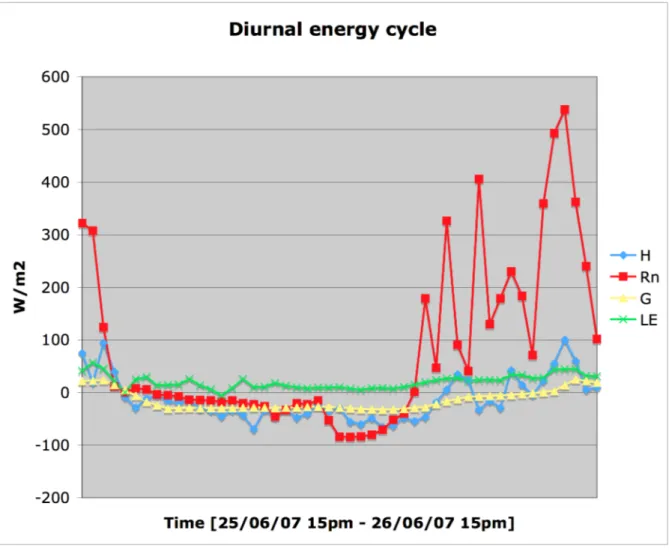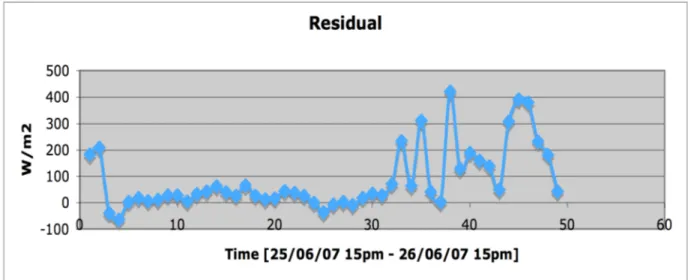The Eddy Covariance Method
Exchange between earth and atmosphere is considered more and more relevant to climate studies. The earth surface appears to be an important source and sink, depending of the region and the moment considered, of water vapor, carbon dioxide, methane and other gases that are for instance used for vegetations respiration (Evapotranspiration accounts for the use of CO 2
and the emission of moisture). Assessing the exchange rates between soil surface and atmosphere and their variability is a key to a better understanding of the geochemical cycles and especially a way to quantify budgets, residence times and the vegetation’s effect as a part of the climate system.
Picture 1: Sonic anemometer and infra red gas analyzer.
The measurement of these budgets is done by the combined measurement of the 3 wind components and the gases concentration at high temporal frequency. By the using the Eddy Covariance method it is possible to derive the turbulent fluxes associated with those exchanges. The measurements are decomposed into a temporal mean term (average of the considered value over a certain time span) and a short term deviation to the mean:
!
u = u + u "
This so called Reynold’s decomposition is then used with concentration measurements to compute the vertical fluxes according to the Advection/Diffusion equation. This equation yields (no horizontal concentration and wind speed gradients are assumed, and coordinates are considered with respect to local stream lines):
!
" c
" t = # " w $ c $
" z + S ource # S ink
This method has been applied for CO 2 and H 2 O flux evaluation during the field course at the Rietzholdbach catchment area, on the 26 th of June 2007, and the purpose of this part is to show some results of this experiment.
1. Calibration:
The output data of the infrared gas analyzer yields mV values. A first step is to calibrate this output by using a known water vapor concentration generated with a dew-point generator and monitoring the instrument’s response. As this response is known to be non linear, at least 3 measurements are needed.
Dew point°C T inside °C Mean mV Abs humidity(g/m3)
Point 1 9 17 3498,642295 8,5673
Point 2 5 17,5 3130,059701 6,4994
Point 3 1 18,8 2834,860697 4,873
After fitting the data points we obtain:
H 2 O Concentration [kg/m 3 ] = -9.3968*10 -3 + 4,6*10 -6 * S +2*10 -10 * S 2 where S is the signal in mV.
2. Fluxes
Reynold’s decomposition:
!
w = mean(w)
w = 0.38735184[m.s "1 ] C H20 = mean(C H
20 )
C H20 = 0.01103393[kg.m "3 ]
!
"
w = w # w
C H2O " = C H
2O # C H
2O
$
% &
' &
( " w ) C H2O " = mean( w " ) C H
2O " )
"
w ) C H2O " = #5.53085 ) 10 #6 [kg.s #1 .m #2 ]
Correlation coefficient between w’ and c’:
!
Cor( w " , C H
2

